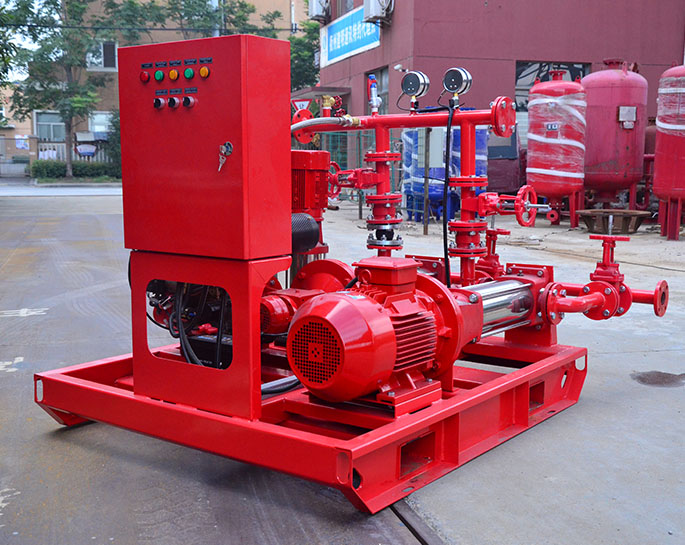Basic composition of fire pump knife gate valve and pneumatic actuator
A fire pump knife gate valve with a pneumatic actuator consists of two main components: the knife gate valve itself and the pneumatic actuator that controls the valve's opening and closing. Let's look at the basic composition of each component:
1. Knife Gate Valve: The knife gate valve is a specific type of valve designed to provide a tight shut-off in applications where a free-flowing, unobstructed passage is not required. It is commonly used in systems where on/off control or isolation of the flow is necessary, such as fire protection systems. The basic composition of a knife gate valve includes:
-
Valve Body: The main casing of the valve that houses the gate and provides the flow path. The body is typically made of cast iron, stainless steel, or other materials suitable for the application.
-
Gate: The gate is a flat or beveled plate that moves in and out of the flow path to control the water flow. It is the primary component responsible for opening and closing the valve.
-
Seat: The seat is a soft or resilient material lining the valve body, which helps create a tight seal when the gate is closed. The seat prevents water leakage when the valve is shut.
-
Stem: The stem is a rod or shaft that connects the gate to the actuator. It transmits the actuator's movement to the gate, enabling the valve to open and close.
2. Pneumatic Actuator: The pneumatic actuator is a device responsible for controlling the movement of the gate in the knife gate valve using compressed air. It converts the energy of the compressed air into mechanical motion to open or close the valve. The basic composition of a pneumatic actuator includes:
-
Actuator Housing: The outer casing of the actuator, which encloses and protects the internal components. It is usually made of metal or other durable materials.
-
Diaphragm or Piston: The diaphragm or piston is a flexible element inside the actuator that moves in response to changes in air pressure. When air is supplied, the diaphragm or piston moves, transferring the force to the gate and causing it to open or close.
-
Spring: The spring provides a closing force in the actuator. When air pressure is reduced, the spring pushes the diaphragm or piston back to its original position, closing the valve.
-
Air Inlet/Outlet Ports: These are the connections through which compressed air is supplied to and released from the actuator. The air inlet port controls the actuator's movement, while the outlet port vents the air to release pressure.
-
Position Control Mechanism: The actuator may have a mechanism to control the valve's position within the flow path. This allows for partial opening or throttling of the valve for flow control.
-
Emergency Shutdown Features: Pneumatic actuators may include fail-safe features to allow manual operation or automatic closing of the valve in case of emergencies or power failure.
Overall, the combination of a knife gate valve and a pneumatic actuator provides an efficient and reliable solution for controlling water flow in fire protection systems, ensuring quick response times and accurate flow control during firefighting operations.


.png)
.png)

.png)


